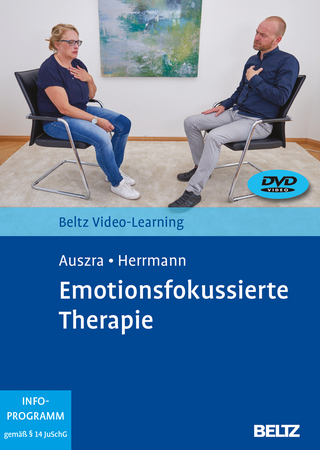
Novartis Foundation Symposium 275 – Understanding Nicotine and Tobacco Addiction
John Wiley & Sons Ltd (Hersteller)
978-0-470-02923-7 (ISBN)
- Keine Verlagsinformationen verfügbar
- Artikel merken
Cigarette smoking is estimated to lead to 4.9 million premature deaths per year worldwide. This is predicted to rise to 10 million by 2020. In western countries it kills half of all smokers who fail to stop. The prevailing model for tobacco addiction is that nicotine from cigarettes rewards smoking and punishes abstinence, tapping into a motivational system of operant conditioning that requires no conscious awareness. However, there are also accounts which involve cognitive biases and the effect of nicotine on impulse control. The brain pathways involved have been studied extensively, but the role of different nicotine receptor subtypes and other neurotransmitter systems is still subject to debate. In western countries, cigarette smoking as an adult has a heritability of 30-50% and candidate genes have been identified that may contribute in part to addiction susceptibility. Many socio-cultural correlates of cigarette smoking have been established, but a comprehensive model that accounts for these and links them with the psychobiological aspects of nicotine addiction has not been forthcoming.
Structured behavioural support programmes aid cessation attempts, as do a number of pharmacotherapies, most notably nicotine replacement treatments and bupropion, but the underlying mechanisms are unclear. This book deals with the problems involved in understanding and treating nicotine and tobacco addiction. Topics covered include the nature of the worldwide health problem posed by cigarette smoking, the psychodynamics of cigarette addiction, and the basic pharmacology and biochemistry of nicotine and its effect on the brain. Further chapters analyse the genetic basis of susceptibility to nicotine addiction. Finally, the contributors address approaches to therapy. A continuing theme in the discussions throughout the book is how best to treat nicotine addiction, given that many smokers would like to stop smoking but are unable to do so because of their addiction. This book will be of great value to all psychologists and psychiatrists working on addiction, specifically to nicotine but also to other compounds and behaviours.
It will also be of interest to neuroscientists and pharmacologists working on nicotine receptors and the brain pathways involved in dependence, as well as to biochemists, molecular biologist and to public health officials.
The Novartis Foundation is an international scientific and educational charity which promotes the study and general knowledge of science and in particular encourages international co-operation in scientific research.
Symposium on Understanding nicotine and tobacco addiction, held at the Novartis Foundation, London, 17-19 May 2005. Editors: Gregory Bock (Organizer) and Jamie Goode. This symposium is based on a proposal made by Robert West and Gino van Heeke. William A. Corrigall Chair's introduction. Richard Peto and Richard Doll The hazards of smoking and the benefits of stopping. Discussion. Ian Stolerman Animal models for nicotine dependence. Discussion. Robert West Defining and assessing nicotine dependence in humans. Discussion. General discussion I. Uwe Maskos, Sylvie Granon, Philippe Faure and Jean-Pierre Changeux Nicotinic acetylcholine receptor functions in the CNS investigated with a novel method of stereotaxic gene re-expression in knockout mice. Discussion. Marina R. Picciotto Nicotine-mediated activation of signal transduction pathways. Discussion. David Balfour Complementary roles for the accumbal shell and core in nicotine dependence. Discussion. Christian Heidbreder The dopamine D3 system: new opportunities for dopamine-based reward. Discussion. Athina Markou Pathways and systems involved in nicotine dependence. Discussion. Arthur L. Brody Localizing tobacco dependence pathways with functional brain imaging. Discussion. Caryn Lerman Pharmacogenetic approach to nicotine dependence treatment. Discussion. Robert Walton Pharmacogenomics and smoking cessation. Discussion. General discussion II Power in studies. Receptor desensitization. Peter Hajek What limits the efficacy of current nicotine replacement therapies? Discussion. Saul Shiffman, Stuart Ferguson and Deborah Scharf Exploring behavioural mechanisms of nicotine replacement therapy for smoking cessation. Discussion. Rachel F. Tyndale and Edward M. Sellers Modifying the metabolism of nicotine as a therapeutic strategy. Discussion. William A. Corrigall Challenges in discovery and development of pharmacotherapies for tobacco addiction. Discussion. Final discussion Nicotine comorbidity. Animal models. Index of contributors. Subject index.
| Erscheint lt. Verlag | 7.10.2008 |
|---|---|
| Verlagsort | Chichester |
| Sprache | englisch |
| Maße | 181 x 233 mm |
| Gewicht | 582 g |
| Themenwelt | Geisteswissenschaften ► Psychologie ► Klinische Psychologie |
| Medizin / Pharmazie ► Medizinische Fachgebiete ► Suchtkrankheiten | |
| Naturwissenschaften ► Biologie | |
| ISBN-10 | 0-470-02923-4 / 0470029234 |
| ISBN-13 | 978-0-470-02923-7 / 9780470029237 |
| Zustand | Neuware |
| Haben Sie eine Frage zum Produkt? |
aus dem Bereich
